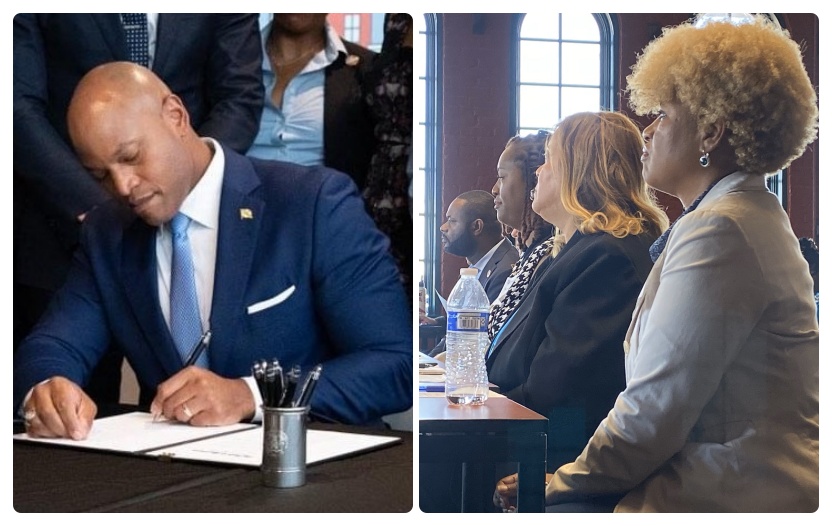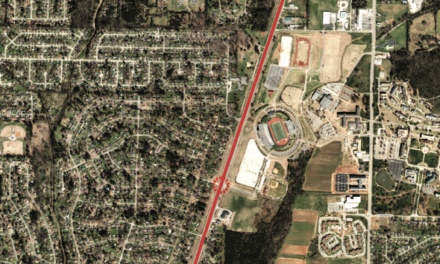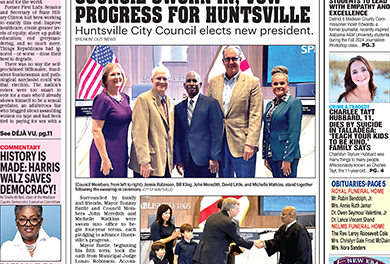By Tashi McQueen
AFRO Staff Writer
tmcqueen@afro.com
The new Baltimore Vacants Reinvestment Council (BVRC) held its inaugural meeting in Broadway East on Nov. 7.
“A house represents the soul of the community, and a vacant house represents a missed opportunity,” said Jake Day, secretary of Housing and Community Development at the Maryland Department of Housing and Community Development (DHCD). “It represents dollars not spent in the economy [and] tax revenue not finding its way back to city budgets or to state budgets. It represents people not there to participate in the community, to advocate for themselves, to cry out for their needs and aspirations.”

Day, as chairman, led the meeting alongside Alice Kennedy, housing commissioner for the Baltimore City Department of Housing and Community Development, who serves as the vice chair.
“We’re here today to chart a new course for the City of Baltimore to reimagine the way that vacancy can be addressed,” said Day. “It will require tough conversations and important decisions.”
Day highlighted the reason members of the council came together.
“Gov. Wes Moore (D) signed an executive order on Oct. 1, establishing the Reinvest Baltimore initiative and this council,” said Day. “We have city leaders from the office of Mayor Brandon M. Scott (D) and the Baltimore City Council. We have representatives of the philanthropic and public sectors and private sectors, including the business community.”
The main functions of the executive order include renaming DHCD’s Project C.O.R.E. (Creating Opportunities for Revitalization and Equity) to the Baltimore Vacants Reinvestment Initiative and creating BVRC.
“Project C.O.R.E. has been successful in transforming communities that were plagued with blight and vacancy,” said Del. Stephanie Smith (D-Md.-45), who also serves on the council. “We just wanted to make sure that Project C.O.R.E. could work at a bigger level and be more fully supported by philanthropic and other governmental funding infusion.”
According to an annual DHCD report, “from January 2016 through June 2023, MSA (Maryland Stadium Authority), the City of Baltimore, and DHCD removed a total of 5,387 units of blight through demolition, deconstruction or stabilization.”
According to the executive order, the renamed initiative’s roles include creating jobs, developing green spaces and paving the way for affordable housing. The new council will also oversee efforts to implement Reinvest Baltimore and report to the governor about such progress.
During the meeting, the council acknowledged the history of redlining and how it has created a persisting 16,000 vacant property issue in Baltimore City – up until recent years.

(Photo credit: AFRO Photo / Tashi McQueen)
“As of this morning, there are 13,056 vacant homes,” said Kennedy on Nov. 7. “We update this dashboard three times a day because we are issuing and eliminating new vacant building notices every day.”
The executive order also acknowledges that lower-income Black Baltimoreans and other people of color in Baltimore are disproportionately impacted by concentrated vacant properties throughout the city.
According to a regional report by Peter M. Dolkart and Adam Scavette, “neighborhoods with the largest share of abandoned properties are majority-Black and impoverished, such as Sandtown-Winchester/Harlem Park (31 percent), Southwest Baltimore (29 percent) and Greenmount East (27 percent).”
Dolkart and Scavette work for the Federal Reserve Bank of Richmond. Dolkart serves as the Community Development regional manager for the Maryland and West Virginia locations and Scavette is a regional economist at the Baltimore branch.
“We are doing this work specifically to redress racist housing policies in the City of Baltimore,” said Kennedy. “We are not just showing up to invest in our neighborhoods and invest in our communities. We’re here to heal the neighborhoods in the City of Baltimore.”
Smith assured Black Baltimoreans living in blighted areas that investments through Reinvest Baltimore will reach them.
“These funds can only be used in Baltimore. They can’t be used in some other part of the state, and I think people should be comforted by that,” said Smith, in regards to the increased $50 million a year the state will commit to Reinvest Baltimore in Fiscal Year 2026 and so on. “This is money for Baltimore to be used in Baltimore that is already working in Baltimore. It’s not a new idea. It’s just a continuation and a scaling up.”
Day said the council’s primary goals include recommending “coordination strategies to reduce obstacles, measure progress and thus hold ourselves accountable to that progress, to provide guidance and to maximize community-based priorities and investments.”
“VacantStat is going to happen in the coming months,” said Day. “We’re going to have a preview of that in an upcoming meeting.”
VacantStat, a comprehensive state and local-level data dashboard to monitor progress on Reinvest Baltimore, will also be released soon through the council.
Long-term goals for the council include reducing vacant building notices by 5,000 in five years and by 13,998 in 15 years.
“Throughout the year, we will be scheduling events that will include public participation,” said Day, emphasizing that they are still working out what that will look like in the coming months based on feedback. “Public engagement is important to us, and we will enable it.”
The council’s next meeting will go from 12:30 to 2 p.m. on Dec. 12. Their meetings will go from 11 a.m. to 12:30 p.m. on the first Tuesdays of each month in 2025.
Smith said the plan the council is developing “is not only going to make neighborhoods safer and look better, it’s also going to increase the wealth opportunity for people who already live there.” Those who “have seen their biggest investment, their home, devalued over decades” due to excessive blight and vacancy.
The post New council launches to tackle Baltimore’s vacancy crisis through state collaboration appeared first on AFRO American Newspapers.











